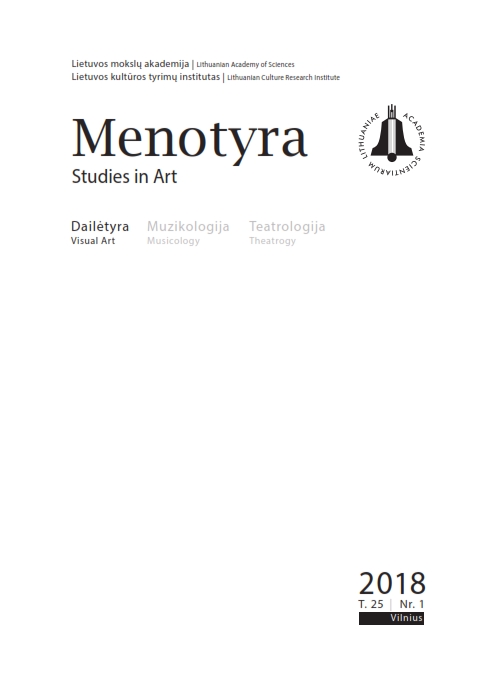Apie XIX a. I pusės tapytoją Rožę Parčevskytę: biografijos ir kūrybos fragmentai
About the first half of the 19th c. painter Roza Parczewska: some fragments of biography and works
Author(s): Jolanta KlietkutėSubject(s): History of Church(es), Visual Arts, 19th Century
Published by: Lietuvos mokslų akademijos leidykla
Keywords: R. Parczewska; Parczewski family; Raudondvaris (Nemenčinė); Kretinga; Grodno; painters; miniatures; religious paintings;
Summary/Abstract: The article reviews the biography and works of the painter Roza Parczewska. The life of the painter presented in the publication was picked up crumb by crumb from various sources of the 21st century. However, these are only small light flashes in the surface layers of the history, which passed into silence. Her life is worth a much more detailed historical research, or maybe even a pen of the novelist. Roza Parczewska (15 September 1799 – 20 October 1852, Raudondvaris Manor of Nemenčinė) was born in the family of colonel Ignacy and Salomea Dziewońska Parczewska. The painter devoted her life to the family, charity work and painting. At the end of the 18th – beginning of the 19th century, a number of people of the manor made attempts in the fine arts, although they did not have appropriate education. It is not known where and when Parczewska studied painting. However, it is likely that she was acquainted with it during her general education. She painted miniatures early in her life. Later she moved to the largescale oil paintings of religious motives in churches.Parczewska participated actively in the artistic life. She was the first woman in Lithuania who participated with her own works in exhibitions. Her miniatures painted on ivory received an extremely high recognition. The painter created in the spirit of that time and was employed to make copies of popular miniatures of that time. She painted very thoroughly, perfectly repeating the original images. Therefore, her works were especially popular and widespread in Lithuanian manors. Alexander Parczewski recorded eight miniatures and fifteen paintings painted by his sister. However, a complete creative heritage of the painter is unknown. It is obvious that her brother Alexander mentioned not all of her works. A part of her paintings were lost in church fires (for example, in 1842 and 1947 all her paintings were lost in the fire of Nemenčinė church).The religious painting of Parczewska was inspired by the tendencies and traditions characteristic of this field of art. The painter brilliantly and thoroughly copied the works of the well known painters. For example, in 1831 R. Parczewska created a painting of the Immaculate Conception of the Blessed Virgin Mary in the Kretinga Franciscan Church according to the painting by Szymon Czechowicz from the Assumption of the Blessed Virgin Mary Parish Church in Węgrów (Poland). Another painting of R. Parczewska created in 1837 according to the same work by S. Czechowicz is kept at the altar of Our Lady in Grodno Cathedral (Belarus). R. Parczewska as an amateur painter reached very satisfactory results. She was one of the first women painters who participated in the exhibitions where her works gained praise words. However, the modern art critics estimate her ability of painting as average. Nevertheless, the preserved paintings are considered to be an interesting and valuable example of the specific phenomenon of amateur painter’s creation of the 19th century in Lithuania.
Journal: Menotyra
- Issue Year: 25/2018
- Issue No: 1
- Page Range: 56-72
- Page Count: 17
- Language: Lithuanian

